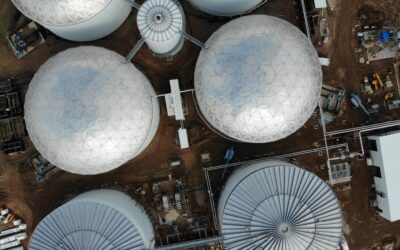TAKEAWAY FROM GAI NY 2020 – CONTROLLED ENVIRONMENT AGRICULTURE (CEA)
By Michelle Pelletier Marshall, Global AgInvesting Media
Once overlooked as a viable alternative to the growing issue of providing food for an ever-populous world, Controlled Environment Agriculture (CEA) has gained much traction as of late, especially since COVID-19 has highlighted the vulnerability of the current ag supply chain.
Addressing this topic of burgeoning interest at this week’s flagship Global AgInvesting conference was David Chen, CEO of Equilibrium Capital, an asset manager focused on sustainable and impact-driven agricultural investments.
“Almost every part of the ag value chain is in flux,” Chen told the hundreds of attendees who gathered for the first virtual Global AgInvesting event. “Where we grow our food, how we grow our food, how we get our food and what we’re eating is all changing simultaneously right now, which we think is one of the most exciting periods in agriculture. The punchline here is that sustainability and technology are the drivers of this change and …that ag is becoming an infrastructure sector.”
By this, Chen explained, is that when you consider an indoor farm of 2.5 million square feet or more, it’s more than a farm – it’s a water infrastructure, an energy infrastructure, an automation infrastructure, a climate management infrastructure, and of course the hardscape – the physical buildings and glass and steel themselves.
And Equilibrium should know – it has approximately $600 million invested in the CEA sector, and significant North American market share in vine crops, leafy greens, and berries thanks to its early entry and partnerships in the sector. Its two primary strategies of facility expansion equity and corporate expansion equity have served it well with its $82 million investment in 2019 in AppHarvest for the construction of a 60-acre, high-tech, climate-controlled greenhouse project in Morehead, Kentucky; its investments in Revol Greens, first in 2018 with a $11.3 million investment in a Minnesota-based greenhouse, and then in January of this year through a partnership with them to develop a 16-acre, advanced technology-automated lettuce and leafy greens greenhouse in Tehachapi, California.
It also announced in February 2019 that Australia’s LGIAsuper committed $112 million to its newest fund – a vehicle focused on investment opportunities in fresh food production in North America. That same month, Equilibrium Capital Group announced a partnership via equity investment in Houweling’s Group, an advanced greenhouse grower of tomatoes, bell peppers, and cucumbers.
So Why Aren’t More Ag Investors Looking at CEA?
They are, said Chen, but CEA turns the investment in agriculture on its head. He noted the three historical primary themes in ag investment of land, the aging farmer, and feeding the growing global population.
“But we see a shift in the paradigm,” said Chen. “The future of ag is in distributed abundance, in technology economics and models; it’s about product and user-centered economies and sectors. It’s not land-centered, it’s not about an older farmer, and it’s a sector that’s in full inflection.”
And indoor farming is more than just putting a roof over the land, he said. “Controlled Environment Agriculture is not about land, or geography or soil or climate; it’s the ultimate in BYO and DIY – bring your own climate, soil – do-it-yourself.” It means that growing can be done anywhere – the Arabian desert to the fertile Midwest. It’s managing a technology firm that’s inside a farm which requires “riding the technology rate of change”.
Chen ended with noting that field agriculture has for the long term been at a 1 to 1.5 percent productivity curve, and that CEA has historically been on a 3 to 5 percent productivity curve. “Given the compound technologies that we see, we think that there’s the very real potential that over the next decade there will be an even steeper annualized productivity increase in the order of 10-plus percent per year. This means that your facility, over the course of the next decade, could potentially double or triple in its productivity on the same set of assets.”
~ Michelle Pelletier Marshall is managing editor for HighQuest Group’s Global AgInvesting’s GAI Gazette magazine and its WIA Today blog, as well as a contributor to GAI News and the Oilseed & Grain News. She can be reached at [email protected].
